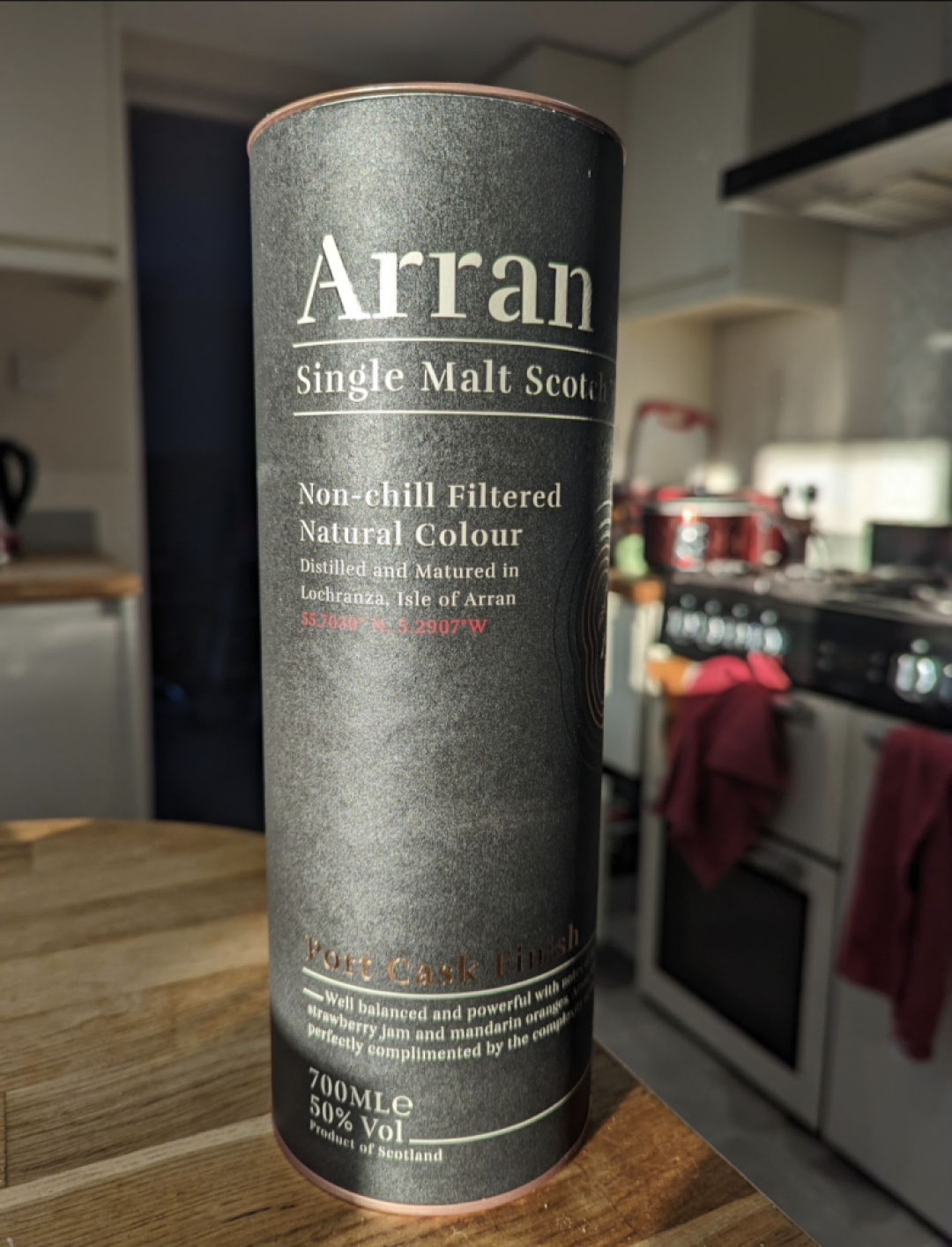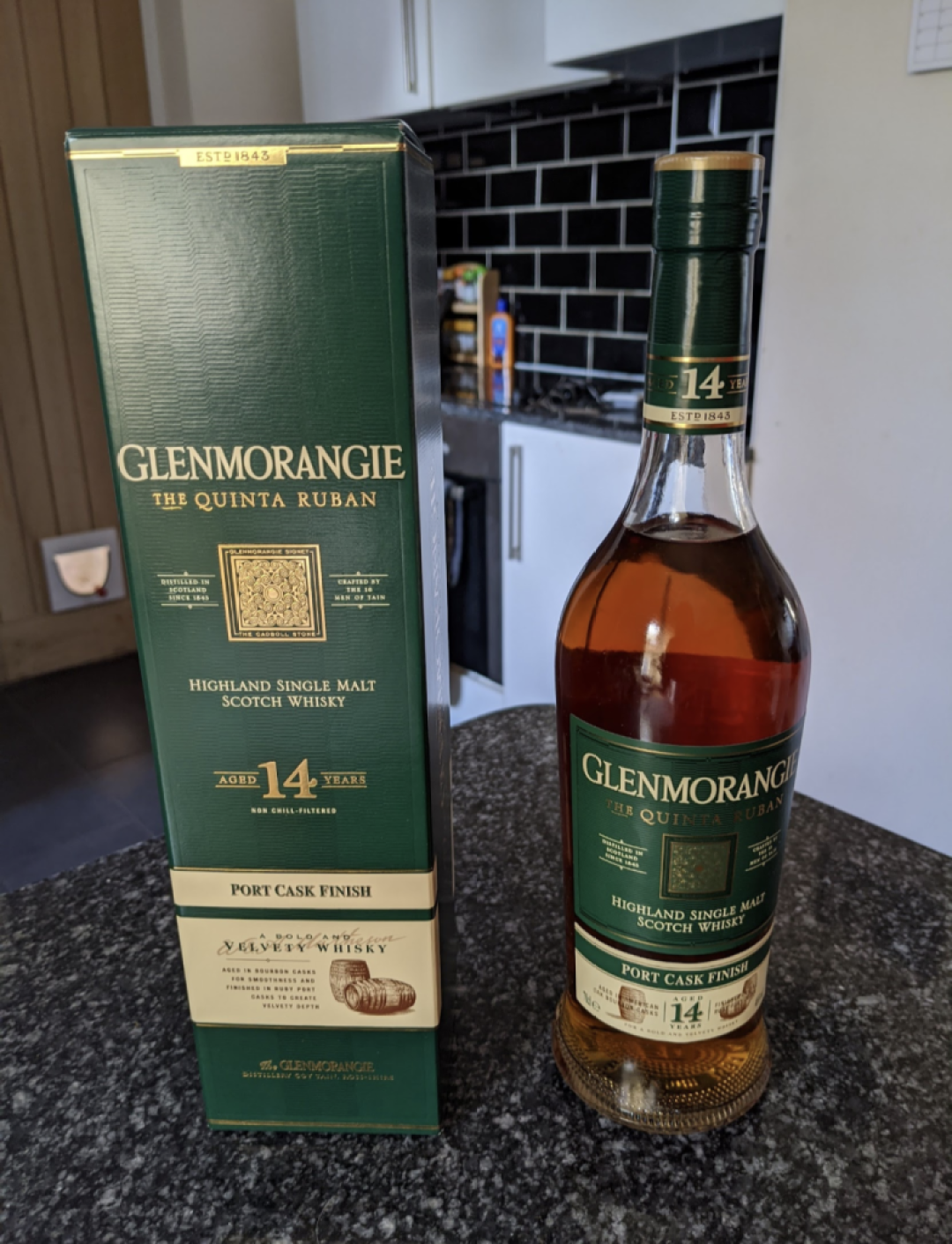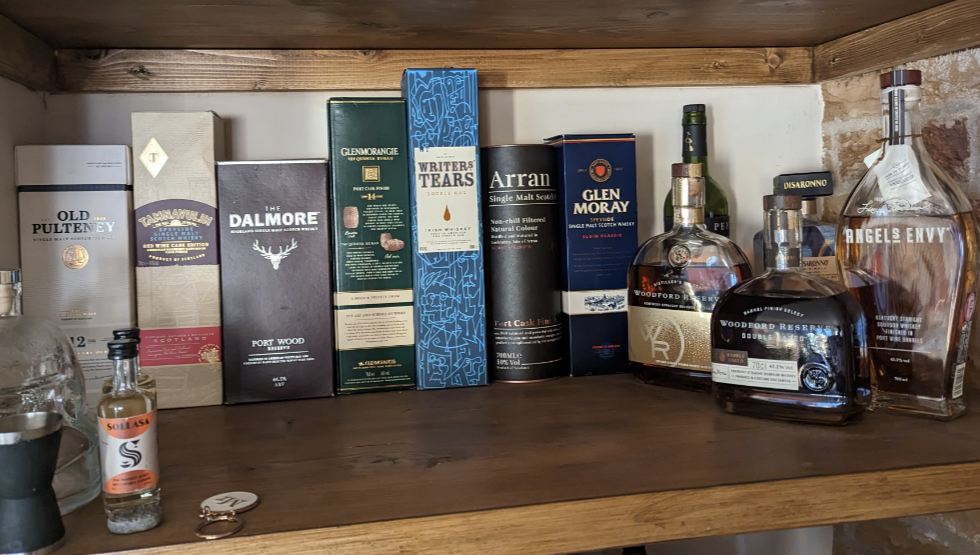I have been enjoying whisky for well over twenty years. When I first started drinking in my teenage years, it was a spirit that immediately stood out from others. This was mostly due to its complex taste, fascinating history, and a slight hint of national pride.
I remember popping my first bottle vividly and getting immediately hooked on the world of scotch. Like with most of us, it started with the usual supermarket brands, then, as time went by, I started to explore the ranges through independent retailers and websites.

There is so much depth to whisky. As someone dives down the rabbit hole, it opens up an entire world ranging from regions, countries, age, histories, traditions, and casks. Over time, you naturally find a type which satisfies your pallet and reflects your style as a drinker. For me, a port cask Scotch has always been a favourite of mine.

Port cask whisky means that the whisky has been finished off in port barrels towards the end of its ageing process. This blends whisky and port together to give a superb marriage of flavour between the two. The port cask give the dram a deep ruby finish which really cannot be found anywhere else. It’s a great fireside drink that also compliments chocolate and other sweet snacks perfectly.
Without further ado, I would like to share my top 5 favourite pork cask whisky. If you feel I have missed any out then do not hesitate to get in touch!
5. Balvenie Port Wood Cask – 21 years – 40%

You’d be wrong in assuming that a higher aged whisky automatically results in a better taste. The way to look at whisky is that a distillery has an idea of a particular taste they wish to create and will do what it takes to most accurately replicate what they envisioned. If that just so happens to require 21 years then so be it! That generally suggests a better taste, as a distillery would not go to such trouble of waiting so long for nothing but it is not a set rule.
The first thing you would assume by looking at the Balvenie, is with 21 years of ageing under its belt the port should have a robust port flavour. Unfortunately, the whisky is only aged in the port cask barrels for a couple of months out of those 21 years! This makes the port more subtle in the whisky than perhaps one would assume but it does make it an incredibly smooth dram.
There is no doubt that The Balvenie is a superb take of port cask whisky, as it was actually my first introduction into port casks. Nobody will drink this whisky and feel disappointed but it does come at a hefty £180. This is high end territory and for the price really needs to justify itself, which is where it falls down on my list.
Another feature which lets it down is that at 40% it appears to be chill-filtered. This is where the whisky is filtered through a process to prevent clouding by bringing the dram to a very cold temperature (often below 0 degrees).
A simple way of explaining why chill-filtered can be an issue for some drinkers, is that it can take out some of the nuances in the flavour in the same way an MP3 takes subtle details out of the sound quality of a song. Chill-filtered keeps the fundamental taste of a whiskey (and sometimes the negative effects will barely be noticeable) but many claim that it loses some of the character and edges that can give a whisky it’s character.
Chill-filtered can be forgiven with most whisky and it does not make a huge difference overall but for £180 this is something you should not be expecting.
The Balvenie is as good as some of the others on my list but loses points for its cost to quality imbalance – with the price being nearly 4 times as much as some of the others on the list.
4. Penderyn Portwood – 46%

The Welsh entry on the list. Penderyn has always been one of the best supermarket whiskies available but it was only recently I learned they do a port cask version. The moment I found out about this gem, I bought it as quickly as possible, and I must admit, I was pleasantly surprised by what it has to offer.
This was on sale for a mere £40 on Amazon (of all places). Looking online, this was averaging £50. It was also included in Prime for free next day delivery, so consider this the bargain of the bunch.
The Penderyn has a 46% cask strength with no chill-filtered processing. This is a rich and very deep whisky, which is exactly what you would expect from a port cask. It had a slightly harsh aftertaste which let it down slightly.
Hints of dark chocolate and oak, creamy with honey and fruits. A perfect winter dram!
3. Arran Port Cask – 50%

Arran is a quality port cask whisky which offers no artificial colourings and also boasts to be a non chill-filtered whisky. What a great start!
At 50% you are heading almost towards cask strength territory and for £45-50 it is significantly better value than the Balvenie Port Cask (coming in at under a third of the price!). It comes in at 20% more than I paid for the Penderyn Portwood through Amazon but for that little bit extra I think it offers a more robust flavour. Especially considering it is usually the same price elsewhere.
Arran port cask whisky can be harsh on the nose but has a good depth compared to some of the other port wood whisky. It is a great addition for anyone looking to introduce themselves to the port cask range which ticks all the boxes you would expect from a quality dram.
I can really see myself drinking this with something sweet like chocolate by the fireplace…wholesome!
2. Dalmore Port Cask – 46.5%

The Dalmore Port Wood was very nearly in first place. I must have sat here for an hour trying to decide whether or not to include this at number one but after some long consideration, I decided that due to its £65 costs, it was just a little too expensive compared to its competitor at number 1.
This is probably my favourite whisky overall. This is obviously open to interpretation and down to personal taste but with hints of toffee, chocolate, coffee, and cherry, this is very much up my street. It also gives a rich creamy taste which, I feel, fits a port wood flavour oh so well.
This is a non chill-filtered whisky at 46.5%. It offers very little detail in terms of it’s process, so I an unable to tell you how long it has been in the port casks but all you need to know if that with a little splash of water and you are golden!
1. Glenmorangie Quinta Ruban – 14 years – 46%

The Glenmorangie – ‘The Quinta Ruban’, is (in my opinion) the ultimate port cask whisky. It offers the best value at a very fair £50, while still ticking all the boxes on what makes a great port cask whisky.
Getting its name from the wine estates of Portugal (Quinta) and the Gaelic word for ruby (Ruban), the Glenmorangie offers non chill-filtered whisky, aged for 14 years, and uses their famous tall stills for a deeper flavour.
Unlike with The Balvenie, which offers port cask ageing for a mere couple of months, the Quinta Ruban offers 10 years in American oak casks then a very generous 4 years in port casks. This gives it a more prevalent port flavour.
As if that was not enough, Glenmorangie are famous for their tall stills which stand at over 16 feet! What does this mean? It means a slower distillation and lots of vapours running back down the neck in a process – known as reflux. This shape also gives extra cooper contact which helps get rid of the heavy oil off-notes which can ruin the target flavour of the whisky. This removes unpleasant sulfur which can sour the overall taste.
The Quinta Ruban gives an orange, biscuit, and chocolate taste on the pallet which has a rich aftertaste.
For £50, this is the ultimate port cask whisky and the perfect example of what port whisky should be.
Thanks for reading!


Leave a Reply